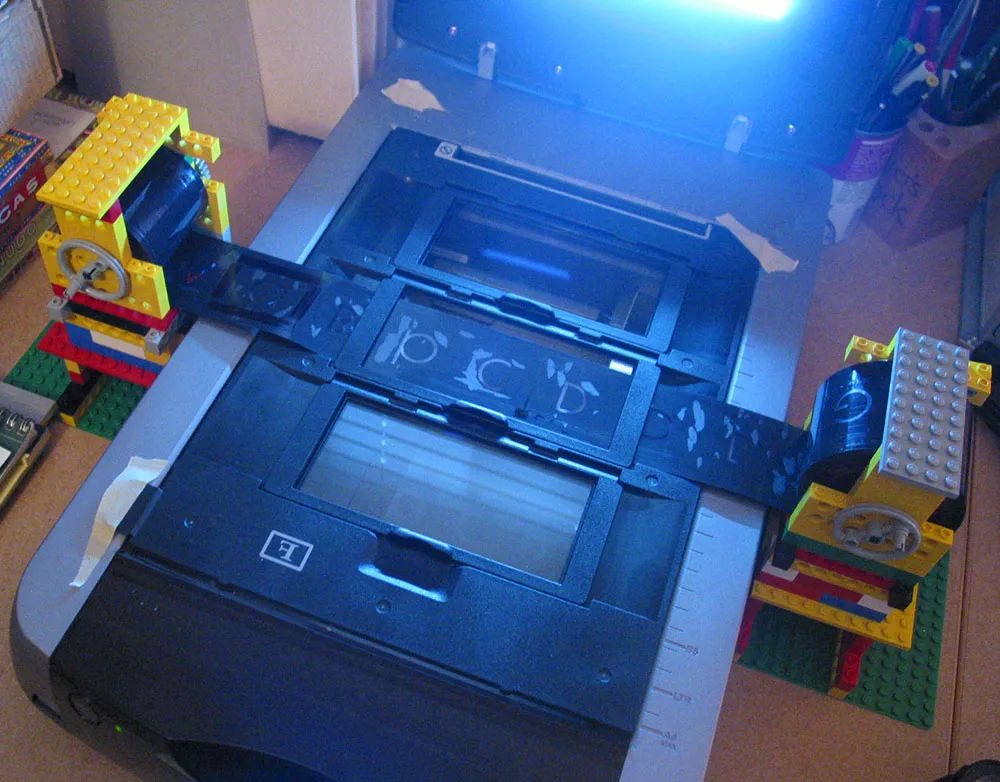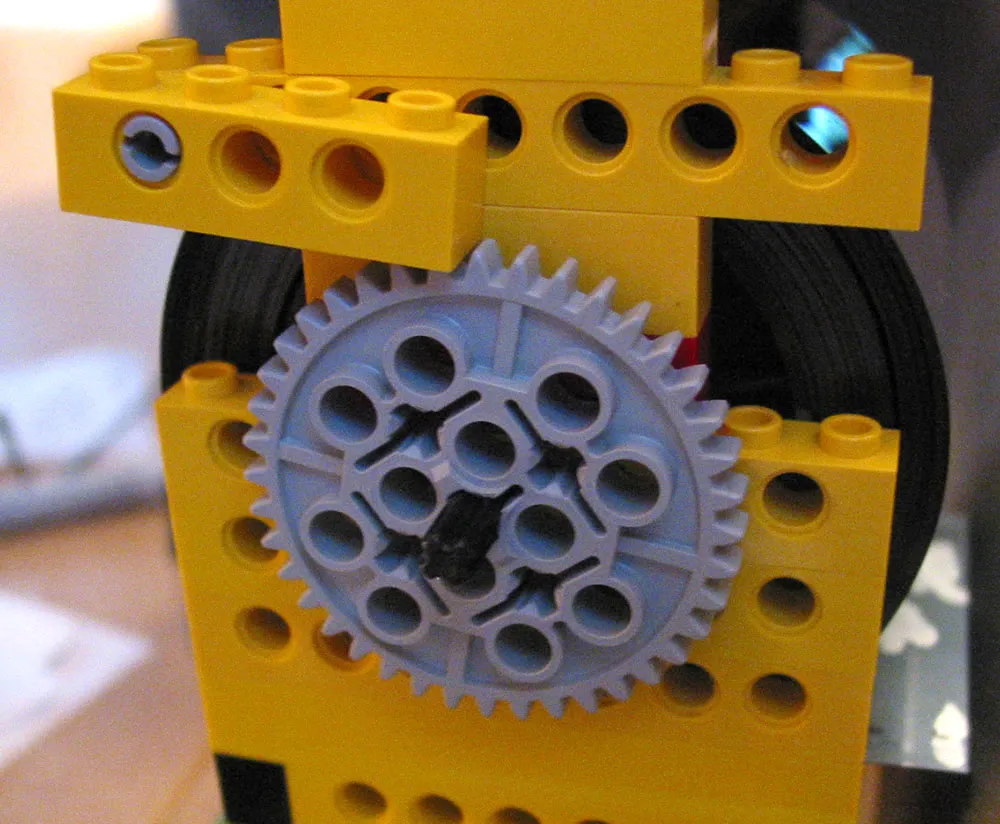Lego, the Type Designer’s Friend

One of the font projects I’m working on is the revival of some of Phil Martin’s display typefaces from the 1970s. These were originally distributed as 2-inch film fonts for the VGC Typositor headline setting machine. The master negatives exist in the form of small spools of 2-inch wide negative film around 50 feet long. They are in very good condition, considering they are up to 35 years old, and I wanted to make sure they stayed that way when it came to scanning them.
The film could pass through a standard film holder on the scanner, but I needed a way to hold up the feed and take-up spools on either side. I pondered this for a long time, and when it came time to actually start scanning, it hit me: Legos!
I am a life-long Lego® fan and, while they are certainly a fun toy, I have sometimes found practical uses for them. As you can see from the photo, I constructed “towers” on either side of the scanner to support the film spools. Gear pieces from an old (and probably collectible) Lego Technics set fit perfectly inside the spools, holding them firmly on axles. Cranks fashioned out of wheel pieces allow the film to be moved back and forth.

Here’s the really clever bit: To keep the film spools in tension (so they stay where I want them and don’t unravel), I devised a simple ratchet mechanism which allows the spools to turn freely in only one direction—away from the other spool. It can be easily flipped out of the way when I want the spools to roll free.
It could look nicer, but a lot of our Lego pieces are otherwise engaged in other projects built by my daughter and me, so I had to scrounge for pieces among the dregs that met the bare minimum requirements.
It occurs to me that if I had the Lego Mindstorms system, which allows you to add motors, light sensors, etc., I could control the whole thing from my computer and completely automate the process. Sounds fun, but this is simpler and gets the job done.
Now all I have to do is scan all the fonts (only about seven or eight hundred more characters to go) and then I’ll be all set to start building the fonts.
I wonder if I should add mini-figures…?
